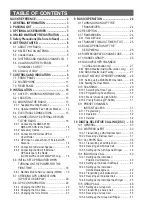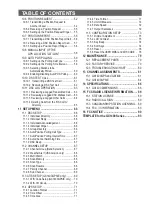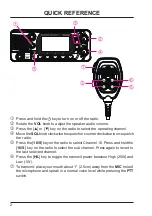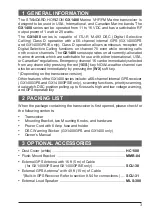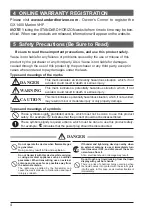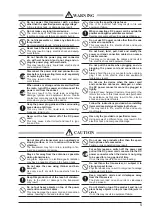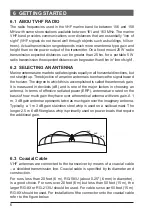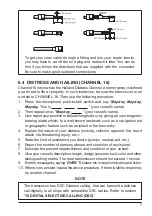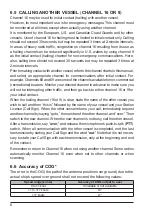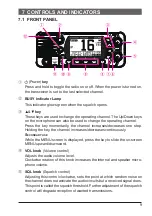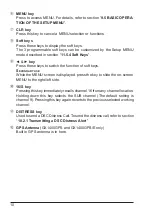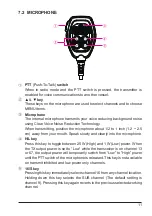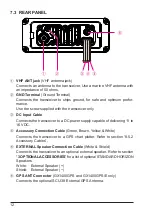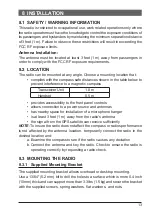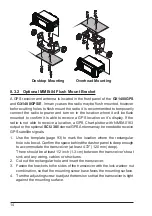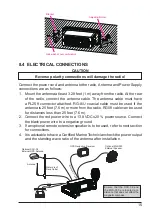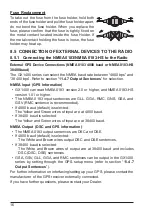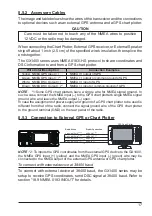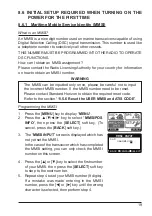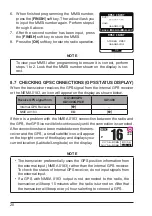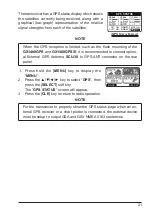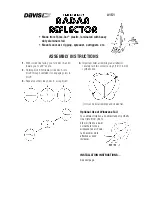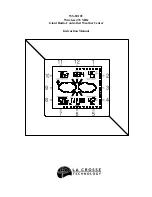
6
6 GETTING STARTED
6.1 ABOUT VHF RADIO
The radio frequencies used in the VHF marine band lie between 156 and 158
MHz with some shore stations available between 161 and 163 MHz. The marine
VHF band provides communications over distances that are essentially “line of
sight” (VHF signals do not travel well through objects such as buildings, hills or
trees). Actual transmission range depends much more on antenna type, gain and
height than on the power output of the transmitter. On a fixed mount 25 W radio
transmission expected distances can be greater than 25 km, for a portable 5 W
radio transmission the expected distance can be greater than 8 km in “line of sight”.
6.2 SELECTING AN ANTENNA
Marine antennas are made to radiate signals equally in all horizontal directions, but
not straight up. The objective of a marine antenna is to enhance the signal toward
the horizon. The degree to which this is accomplished is called the antenna’s gain.
It is measured in decibels (dB) and is one of the major factors in choosing an
antenna. In terms of effective radiated power (ERP), antennas are rated on the
basis of how much gain they have over a theoretical antenna with zero gain. A 1
m, 3 dB gain antenna represents twice as much gain over the imaginary antenna.
Typically, a 1 m 3 dB gain stainless steel whip is used on a sailboat mast. The
longer 2.5 m 6 dB fiberglass whip is primarily used on power boats that require
the additional gain.
3dB
6dB
9dB
6.3 Coaxial Cable
VHF antennas are connected to the transceiver by means of a coaxial cable
– a shielded transmission line. Coaxial cable is specified by its diameter and
construction.
For runs less than 20 feet (6 m), RG-58/U (about 0.25" (6 mm) in diameter),
is a good choice. For runs over 20 feet (6 m) but less than 50 feet (15 m), the
larger RG-8X or RG-213/U should be used. For cable runs over 50 feet (15 m)
RG-8X should be used. For installation of the connector onto the coaxial cable
refer to the figure below.
Summary of Contents for ECLIPSE
Page 96: ......


